The X Button
Plenty More Heroes
by Todd Ciolek,

I try to keep a clear head about video games. I really do. I usually avoid pledging my money and appreciation to a game based on nothing but a trailer. I like to ensure that I play a game, or at least that I learn about its ideas and processes, before I thrown myself at it.
However, all my caution shatters when it comes to the next PlayStation 3 game by Fumito Ueda, director of ICO and Shadow of the Colossus. A trailer of his current project, known as “Trico,” leaked last week, and it's already won me over. Or at least the giant baby griffin has.

The trailer, which is supposedly a year old, shows an intriguing concept: a child exploring ruins with an enormous pet obeying and protecting him. The griffin gets fed, dives underwater, and follows the kid like a huge, feathery puppy. Go watch the trailer (or watch it again) and just see if you're not captivated by the promise it shows. Or maybe you'll just make jokes about The Neverending Story. Either way, it's entertainment.
NEWS
TALES OF VS. STILL NOT DONE ADDING CHARACTERS
Namco's Tales of VS. may be the next logical step for the Tales games, the battle systems of which have always skirted the realm of fighting games. Now there's a full-blown fighter starring characters from the franchise's 14-year history. The character models look pretty good for a PSP title, and the gameplay relies on four-player battles that beg for online confrontations.

So who's in it so far? Shing from Tales of Hearts, Richter from Tales of Symphonia: Dawn of the New World, Luke from Tales of the Abyss, and Yuri from Tales of Vesperia were confirmed as part of the game's cast when it was first announced, and Namco followed this up by sticking in Lloyd and Kratos from Tales of Symphonia, Anise from Abyss, and Stan and Bruiser (“Mighty” in Japan) from Tales of Destiny. The latest round of fighters adds Leon and Phillia from Destiny, Arche and Cress from Tales of Phantasia, Mao from Tales of Rebirth, Luca from Tales of Innocence, Judith from Vesperia, Jade and Asch from Abyss, and Nanaly from Tales of Destiny 2 (that'd be the Japanese sequel to Tales of Destiny, not Tales of Eternia, which was released in North America as Tales of Destiny II). Colette from Symphonia also appears to be in Tales of VS., despite lots of fans hating her.
The final lineup will have 35 characters, meaning that there are still 15 slots to fill. Safe bets include Reid and Farah from Tales of Eternia, Senel from Tales of Legendia, and Repede, the pipe-smoking dog from Tales of Vesperia.
FAKE GAME BECOMES REAL GAME INSIDE AWFUL GAME
Remember Star Radish, the SNK shooter that looked like an old NES game but turned out to be an April Fools' prank? Well, it's a joke no longer. SNK's putting a fully playable version of Star Radish, buzzing soundtrack and all, into Doki Doki Majo Plus. And there lies the problem.

Doki Doki Majo Plus marks the third outing for SNK's witch-detecting series on the DS. In these notorious titles, players use the DS stylus to poke and tickle and otherwise molest cutesy anime girls until they're disclosed their pacts with Beelzebub or whatever. Star Radish shows up when the game introduces a young lady named Renge Oda, who of course must be sexually assaulted until her witchy inclinations are brought to light. No one has to worry about Doki Doki Majo Plus coming out here, but it hits Japan late in July. Will anyone import it just for Star Radish?
Star Radish isn't the only nostalgic exploitation surrounding Doki Doki Majo Plus, as one character's mock blog makes references to SNK's Psycho Soldier arcade game (which introduced recurring characters Athena and Kensou) as well as home versions that never existed. Perhaps these metafictional games will also end up in Doki Doki Majo Plus, making SNK fans long even more for a time when the company just made shooters, fighters, and non-prurient action games.
IN BRIEF: THE NEXT NO MORE HEROES, RAIDEN 4, AND A PS3 EVANGELION GAME
That lovable scamp Gōichi Suda mentioned that the parody-laced action game No More Heroes: Desperate Struggle is nearing the end of its production cycle. He might be screwing with everyone, since that's pretty much what the first No More Heroes did constantly, but it seems that the game will make a 2010 release date at the very least. And remember, it's for the Wii, despite the “DS” subtitle.
Perhaps emboldened by Valcon's release of Raiden Fighters Aces, UFO Interactive announced a North American date for Raiden 4 on the Xbox 360. UFO Interactive actually got the Raiden ball rolling back in 2007 with Raiden III for the PlayStation, but that game was so boring that it doesn't count. I hope Raiden 4 is better. An August release is tentatively scheduled, though UFO is one of those small publishers that views street dates as vague, theoretical concepts with little influence on the perceptible world.
If you bought the Japanese Blu-Ray release of Evangelion 1.0: You Are (Not) A Shot-for-Shot Recap of the TV Show's Dullest Episodes, you may have noticed an insert card that promises an Evangelion-related attraction for the PlayStation 3, with an image of Misato Katsuragi and a few taglines. Said promises are made by Cellius, a company that serves as a joint venture between Namco Bandai and Sony. Cellius is also what Ken Kutaragi ended up running after he was replaced as Sony Computer Entertainment's president in 2006. Curious.
REVIEW: HAMMERIN' HERO
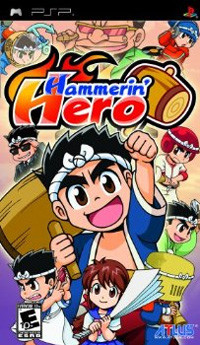 Developer: Irem
Developer: Irem
Publisher: Atlus
Platform: PSP
MSRP: $29.99
Hammerin' Hero is a throwback in several ways. For one thing, it's part of Irem's Gen-San series, which hasn't been seen in North America since the arcade original was released here as Hammerin' Harry in 1990. More importantly, it's a return to the simple mechanics and blunt enthusiasm of the side-scrolling action games that once dominated all sectors of the industry. And if it's a bit too simple, that's part of the appeal.
Like its 19-year-old predecessor, Hammerin' Hero is a tale of one carpenter's struggle against a dehumanizing industrial monolith, told with cheerful, huge-headed cartoon stereotypes. In response to the encroachments of the Kuromoku construction group, Gen (no longer Harry) combats corporate thugs in many local venues: restaurants, beaches, baseball stadiums, haunted houses, television studios, and even a comedy club where half the challenge lies in picking the right punchline. Every stage presents new challenges and gameplay conceits, though they usually come down to Gen whacking things with large objects at precisely the right time.
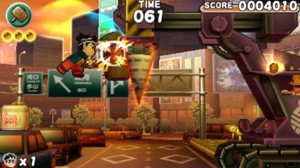 Irem painted Hammerin' Hero with broad strokes. The characters are large and the levels move slowly, inviting well-timed strikes with Gen's various weapons. The stages aren't too long, but they're drawn out by a decidedly old-fashioned design choice: Gen goes down after one hit, or two if he's found a helmet power-up. It turns the game into a quest for perfection, with the player re-starting levels from checkpoints, trying to navigate enemy attack patterns unscathed. Fortunately, the game isn't terribly hard, and everything's so big and basic that the trial-and-error approach works before long. Hammerin' Hero is a clumsy, simplistic creation, perhaps too faithful to the idea of a protagonist who bludgeons every problem, but it knows when to cut the player a break.
Irem painted Hammerin' Hero with broad strokes. The characters are large and the levels move slowly, inviting well-timed strikes with Gen's various weapons. The stages aren't too long, but they're drawn out by a decidedly old-fashioned design choice: Gen goes down after one hit, or two if he's found a helmet power-up. It turns the game into a quest for perfection, with the player re-starting levels from checkpoints, trying to navigate enemy attack patterns unscathed. Fortunately, the game isn't terribly hard, and everything's so big and basic that the trial-and-error approach works before long. Hammerin' Hero is a clumsy, simplistic creation, perhaps too faithful to the idea of a protagonist who bludgeons every problem, but it knows when to cut the player a break.
Hammerin' Hero lacks complexity at its core, yet it surrounds this primitive gameplay with all sorts of humor. Gen unlocks a new outfit after nearly every stage, often enabling different attacks: the sushi chef uniform gives him rapid strikes, the DJ getup lets him hurl records like a Rygar yo-yo discus, and the diving suit includes an extending anchor and chain. Gen also gets support from his girlfriend apparent, Kanna Kirishima (no apparent relation to the identically named martial artist of Sakura Wars), who provides him with lunches that let him switch jobs mid-stage. To make those meals, Gen picks up various foods from defeated enemies and smashed-open crates, accumulating the makings of boxed lunches for each particular job.
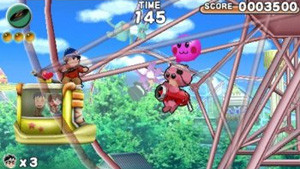 Hammerin' Hero's most inventive feature lurks in its scenery. Most of the game's stages feature average citizens in the backgrounds, and they're sporting emotional baggage in the form of colorful, frowny-faced clouds above their heads. By whacking away these fears and insecurities, Gen creates all sorts of reactions in a level: couples fall in love, a troubled pro wrestler becomes a raging champion of justice, a family gets a house, and even a giant construction robot learns what it is to be human. It reaches an apex in the game's restaurant district, where Gen smacks a bubble of affection from a waitress to a busboy, revealing an entire story as he bats the romantic thought across several kitchens and dining areas. Gen also receives thank-you letters from everyone he helps, an amusing feature I haven't seen since Sega's Burning Rangers.
Hammerin' Hero's most inventive feature lurks in its scenery. Most of the game's stages feature average citizens in the backgrounds, and they're sporting emotional baggage in the form of colorful, frowny-faced clouds above their heads. By whacking away these fears and insecurities, Gen creates all sorts of reactions in a level: couples fall in love, a troubled pro wrestler becomes a raging champion of justice, a family gets a house, and even a giant construction robot learns what it is to be human. It reaches an apex in the game's restaurant district, where Gen smacks a bubble of affection from a waitress to a busboy, revealing an entire story as he bats the romantic thought across several kitchens and dining areas. Gen also receives thank-you letters from everyone he helps, an amusing feature I haven't seen since Sega's Burning Rangers.
It's this earnest appeal that lifts Hammerin' Hero above its sluggish pace. The level designs may be largely routine, but they've got personality. The visuals are bright and colorful, the soundtrack hums along nicely, and the voices sound fine in either language, with Spike Spencer playing against Shinji-Ikari type as the fearless Gen. There's a curious absence of animated cutscenes (considering that Irem backed a Hammerin' Hero anime series under the title of Ikuze! Gen-san), but the characters make up for it with their wide-eyed gusto.
 The disposable story offers a few fun choices (mostly involving Gen's relationship with Kanna), and weirdly entertaining details pop up frequently. It's hard to deny the game's creativity when one boss is a stormcloud of jealous rage created when Kanna spies Gen chasing another woman, or when the game turns into a huge homage to Irem's R-Type series. In a nice nod to shooters, the Kuromoku CEO faces Gen in the R-9 ship, and the last level is effectively an R-Type stage in which Gen pilots a transforming robot-fighter into orbit to take down an oncoming comet.
The disposable story offers a few fun choices (mostly involving Gen's relationship with Kanna), and weirdly entertaining details pop up frequently. It's hard to deny the game's creativity when one boss is a stormcloud of jealous rage created when Kanna spies Gen chasing another woman, or when the game turns into a huge homage to Irem's R-Type series. In a nice nod to shooters, the Kuromoku CEO faces Gen in the R-9 ship, and the last level is effectively an R-Type stage in which Gen pilots a transforming robot-fighter into orbit to take down an oncoming comet.
Hammerin' Hero doesn't last long, though it gives the player a few reasons to return. Finishing the game unlocks Kanna as a playable character, even if Irem shows curious ignorance of modern anime-fan preferences by limiting her to only one costume. The stages offer different ways to resolve every emotional roadblock that Gen and Kanna encounter, and the whole package lends itself to quick bursts of casual enjoyment.
The limited gameplay of Hammerin' Hero won't sit right with those dedicated action-game fans who prefer their challenges complex and refined. This is a breezy little diversion, just hard enough to highlight all of its peripheral charms. Don't expect Hammerin' Hero to recapture the slick intensity of the last decade's best action games, but it's a great way to burn off a few hours and come away happy.
RELEASES FOR THE WEEK OF 5-31
FINAL FANTASY IV: THE AFTER YEARS It's a little difficult for me to remain detached when it comes to this sequel to Final Fantasy IV. Back when it was known as Final Fantasy II and I was an uncynical child, Final Fantasy IV spurred me to save up for a Super NES, and there was a time, during the summer of 1992, that I considered it the greater narrative achievement in human history. I've grown up, but I suspect that Final Fantasy IV: The After Years won't have to work too hard to reduce me to a gibbering preadolescent. It's enough that The After Years is reuniting the cast from the original game, introducing new characters (starting with Cecil and Rosa's son, Ceodore), and even making old supporting players viable party members in an episodic story about moons and crystals. The After Years is very much a traditional RPG of the 16-bit era, with menu-driven battles and basic visuals; it was originally a cell-phone game, after all. But that doesn't matter if it can actually live up to the original game. At this writing, no one seems to know just how much the first of the nine The After Years installments will be, but I imagine we'll find out this weekend. I hope it's not that much for each episode, because I'll be buying all of them.
|
KNIGHTS IN THE NIGHTMARE Developer: Sting Entertainment
Developer: Sting EntertainmentPublisher: Atlus Platform: DS MSRP: $34.99 Knights in the Nightmare is the third game released in Sting's Dept. Heaven series, but it's technically the fourth episode. The series, which also includes Riviera: The Promised Land as its first title and Yggdra Union as its second, is comfortable with skipping an episode and filling it in later. Knights is a strategy-RPG with a uniquely active method of battle: characters are arranged on grids, but the players dodges attacks by guiding a wisp of light around the touch-screen, weaving it in and out of enemy projectiles while the battle rages. The story involves an imposing, formerly angelic castle now at the center of a kingdom's internal war, with a valkyrie joining the player-controlled wisp and meeting up with a cast of characters huge enough to rival the Tactics Ogre series. The artwork and overall atmosphere seem bleaker and more realistic than the cutesy avatars of previous Dept. Heaven games, though Knights in the Nightmare still acknowledges its predecessors. In fact, having an Yggdra Union Game Boy Advance game in your DS will unlock a special character in Knights. Also shipping: Naruto Shippūden: Ninja Council 4, delayed by a week. |
EXTRA LIVES: LEGEND OF SUCCESS JOE
 In past columns, I've done my best to cover the more obscure anime-related games for the Neo Geo, SNK's long-lived, arcade-spawned system. I've looked at the mediocrity of 8 Man and the garish excesses of Voltage Fighter Gowcaizer, and now I've come to the third and worst of the Neo Geo games to be directly tied to an anime series. Shortly after the Neo Geo was released, a largely unknown developer called Wave Corporation wrapped a boxing game around the enduringly popular Ashita no Joe series. A fixture in Japan's pop culture even twenty years after it aired, Ashita no Joe usually undergoes name changes for English-speaking audiences, since the direct translation of “Tomorrow's Joe” sounds a little odd. It's been called Rocky Joe and, in Tai-Seng's recent release of the Ashita no Joe compilation film, Champion Joe. For some reason, SNK and Wave Corp. decided on a translated name far more awkward than "Tomorrow's Joe" and called their game Legend of Success Joe.
In past columns, I've done my best to cover the more obscure anime-related games for the Neo Geo, SNK's long-lived, arcade-spawned system. I've looked at the mediocrity of 8 Man and the garish excesses of Voltage Fighter Gowcaizer, and now I've come to the third and worst of the Neo Geo games to be directly tied to an anime series. Shortly after the Neo Geo was released, a largely unknown developer called Wave Corporation wrapped a boxing game around the enduringly popular Ashita no Joe series. A fixture in Japan's pop culture even twenty years after it aired, Ashita no Joe usually undergoes name changes for English-speaking audiences, since the direct translation of “Tomorrow's Joe” sounds a little odd. It's been called Rocky Joe and, in Tai-Seng's recent release of the Ashita no Joe compilation film, Champion Joe. For some reason, SNK and Wave Corp. decided on a translated name far more awkward than "Tomorrow's Joe" and called their game Legend of Success Joe.
Ashita no Joe tells of a young man's rise from street punk to champion boxer, a tale that gripped audiences across Japan and even inspired a real-life funeral for one of the story's entirely fictional characters. You'll find little of that energy in Legend of Success Joe. The developers make an introductory attempt at capturing the right feel with a stiffly animated sprite of Joe sweating as the faces of his opponents and allies fly past. Yet the game spares little attention to the actual story, with short crawls of text popping up after each fight, detailing Joe's depression at a rival's death or his attempts to confront boxing superstars outside of the ring.
 The game at least follows the letter of the story, if not the spirit. Joe starts off brawling inmates at his local jail, introducing the game's limited side-scrolling engine. Much like the beat-'em-ups of the late 1980s and early 1990s, Legend of Success Joe lets its hero move into the background or foreground, all without jumping. Attacks are carried out with two of the Neo Geo's four face buttons, and they're all a limited mix of uppercuts, hooks, and body blows. Pressing one button throws punches, holding another lets Joe duck or sway, and pushing both tosses attacks that are more powerful than usual, but still lacking in range. The resulting gameplay is stiff and unresponsive, particularly when Joe's matched against much faster foes.
The game at least follows the letter of the story, if not the spirit. Joe starts off brawling inmates at his local jail, introducing the game's limited side-scrolling engine. Much like the beat-'em-ups of the late 1980s and early 1990s, Legend of Success Joe lets its hero move into the background or foreground, all without jumping. Attacks are carried out with two of the Neo Geo's four face buttons, and they're all a limited mix of uppercuts, hooks, and body blows. Pressing one button throws punches, holding another lets Joe duck or sway, and pushing both tosses attacks that are more powerful than usual, but still lacking in range. The resulting gameplay is stiff and unresponsive, particularly when Joe's matched against much faster foes.
In between Joe's bouts in boxing rings, he faces off against rivals and common thugs in gyms, alleys, and other public places. Instead of expanding the game to include varied enemies or power-ups, Wave simply lets it play out like the dullest Double Dragon clone ever. Joe fights a half-dozen dull enemies per stage, followed by a boss who's just as boring. And then it's back into the ring for another flailing, tedious fight with a lazy recreation of one of the anime's boxing stars.
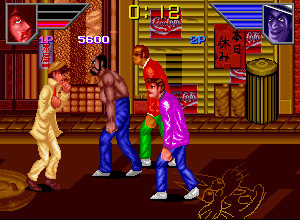 As an arcade machine turned into an expensive home system, the Neo Geo had a visual advantage over every other console available in 1991. This makes it all the stranger that Legend of Success Joe barely looks better than a run-of-the-mill Super NES game. The characters are poorly animated, oddly colored hunchbacks who show off few interesting details, and even the large portraits of the boxers (and Joe's manager Danpei) are weak. The soundtrack offers no impact, with only a few tinny voice samples scattered here and there.
As an arcade machine turned into an expensive home system, the Neo Geo had a visual advantage over every other console available in 1991. This makes it all the stranger that Legend of Success Joe barely looks better than a run-of-the-mill Super NES game. The characters are poorly animated, oddly colored hunchbacks who show off few interesting details, and even the large portraits of the boxers (and Joe's manager Danpei) are weak. The soundtrack offers no impact, with only a few tinny voice samples scattered here and there.
Legend of Success Joe is unrewarding on all fronts. The game offers little technique beyond dodging and hitting, and the fights are pure arcade coin-eating. Rather than balance things, the game simply gives opponents more reach and faster punches, making each stage just as frustrating as it is dull. For a final insult, Legend of Success Joe's ending doesn't even recreate the memorable finale of the Ashita no Joe anime series. Want a Neo Geo vision of an iconic scene that's still referenced in anime today? Too bad. You get Joe jogging in between the names of those responsible for this thing.
Most of the Neo Geo's early games were translated and brought to North American arcades, but Legend of Success Joe stayed in Japan, despite the game already housing an English translation (and a semi-comprehensible one, as early SNK went). Perhaps no one thought it would sell in a country where Ashita no Joe was completely unknown. Or perhaps SNK realized just how terrible the game was. Wave dropped out of sight shortly thereafter and now appears to be in the business of making models for the otaku sector. Today, Legend of Success Joe is one of the few Neo Geo games shunned even by extreme fans of the system, and rightly so.
For a Neo Geo game that no one likes, Legend of Success Joe can get fairly expensive. The home-console version (a.k.a. the AES one) sells for around $150, and the arcade version (the MVS) is around $100 among sellers. They're not fooling anyone.
discuss this in the forum (24 posts) |
this article has been modified since it was originally posted; see change history
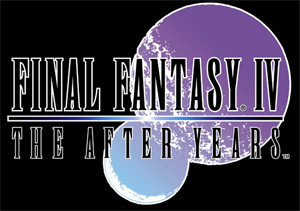 Developer: Matrix
Developer: Matrix